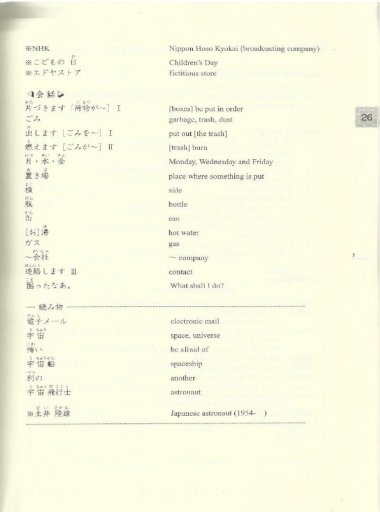
The lesson 1 will introduce some vocabularies, structures which are used in daily life. In this lesson learners will be study the first lesson. The 3 previous lessons had shown all the writing system of Japanese language. If u want to know when the upcoming lesson will be updated, open the below Facebook link and like the page.(for shorter summary, check here : Summary of Minna no nihongo coursebook lesson 1) You can make sentences also in comment below. By looking above vocabulary and grammar section, try to make your own sentences and conversation. そうですか is used by listener when s/he understand what the speaker said. In this case, you don’t have to answer in はい or いいえ。 When you point something and ask whether it is option 1, or option 2. First by using そうじゃありません(No, it isn’t)。And next is answering what the correct answer is. When the answer to the question is positive, そうです is often used.īut, when the answer is negative, we can give answer in two ways. Since we don’t know what the topic is, は-participle cannot be used.

Note: Whenever you use question words as a subject, use が-particle.

どれ is used for これ、それ、あれ。And どの is used for この、その、あの。we will talk about どの in other lesson. あれは カメラの ざっし です。That one over there is Cameras’ article. Here, N1 modifies N2 like in lesson 1.Įxample: これは わたしの ノート です。 This one is my notebook. This kind of form can be said using another form i.e, (N1のN2). この is used for things that are near, その is used if the things are a bit far, and the あの is used for the things that are too far. That means they are followed by noun and then by はーparticle. これ is used for things that are near, それ is used if the things are a bit far, and the あれ is used for the things that are too far. This demonstrative are これ、それ and あれ。This demonstrative are followed by はーparticle. Either you have to question or answer, you need demonstrative to point the object. If you come across a thing that you don’t know and you have desire to know and want to ask someone what is it? This is where demonstrative come into play. I hope for your kind assistance hereafter Please, Here you are(when offering something to someone) So, please be kind enough to read vocabulary before grammar section to understand the grammar part properly. The table below are the vocabulary that will be used in lesson 2. As usual this post is divided into two part: In this lesson we will learn about things.


 0 kommentar(er)
0 kommentar(er)
